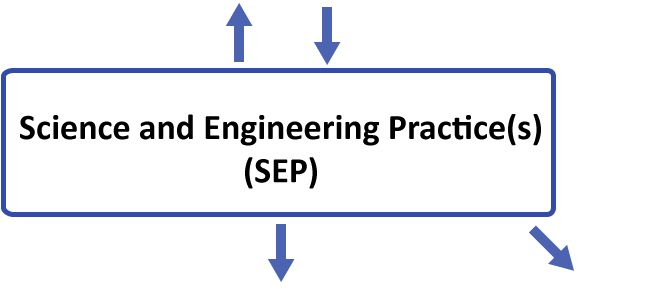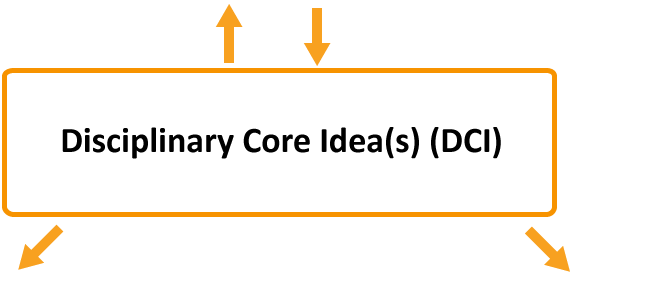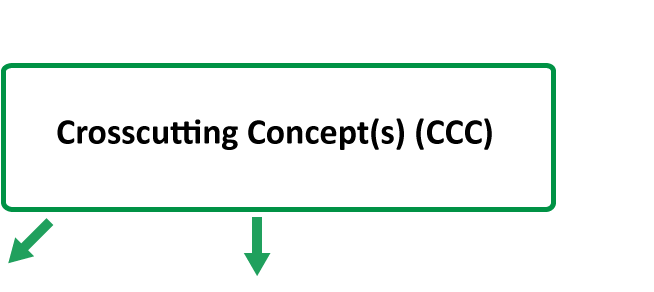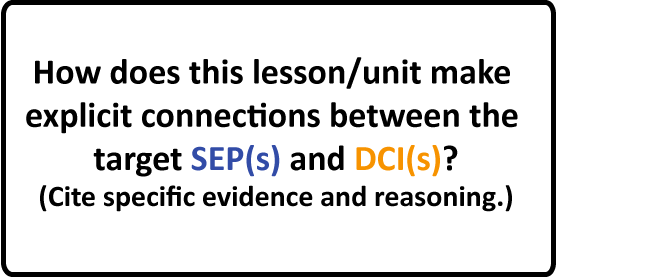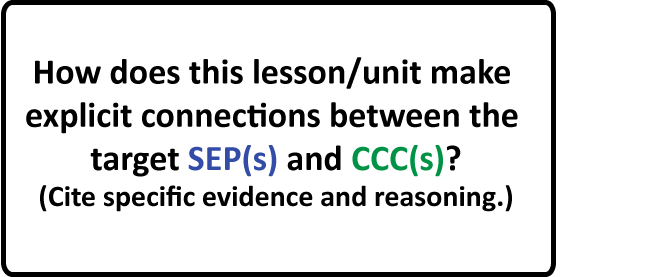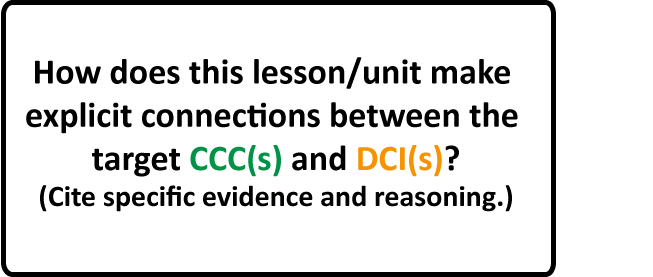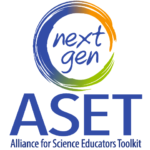
3D Mapping Tool
The 3-Dimensional Mapping Tool is designed to help science educators plan lessons and units aligned with the vision of the Next Generation Science Standards (NGSS) outlined in the Framework (NRC, 2012). Click on each of the boxes of the 3-D Mapping Tool below to access online tools and other supports to help guide development of a 3-D lesson or unit.
Download the ASET 3D Map here (print version for 8.5″x11″ paper)
Download the ASET 3D Map here (print version for 11″x14″ paper)
Download the ASET 3D Map here (fillable version)
Fillable Google Slide Version (to allow editing, make a copy to your own Google drive)
ASET 3-Dimensional Mapping Tool
The ASET 3-Dimensional Mapping Tool (3D Map) is a graphic organizer to help science educators plan lessons and units that integrate the three dimensions outlined in the Framework (NRC, 2012). This 3D map builds on the backward mapping design method (Wiggins & McTighe, 2001) where the 3-D components are linked to a relevant phenomenon and learning outcome, lesson objectives, as well as formative and summative assessment strategies. Along with this mapping tool, supports for how to complete each section of the map and scaffolds to help guide development of a three-dimensional lesson/unit are included as part of the larger ASET toolkit. Links to further details and resources for each topic or box can be explored by clicking on the boxes in the 3D map above. A blank copy of the 3D map pictured above can be downloaded for printing and use from this website.
The ASET 3D Map is an essential part of the larger Alliance for Science Educators Toolkit. When using the supporting materials linked within this 3 Dimensional Mapping Tool, educators should be referencing back to the larger picture of a three-dimensional lesson as provided by the 3D map. This toolkit is continually evolving and may have changes or additions made as new resources are developed.
Current Uses of the ASET Three-Dimensional Mapping Tool
This tool has been used in science methods courses to help deepen understanding of three dimensional science teaching in the context of instructional design and revision.
For Unit Planning: A science unit that is designed to meet the three-dimensionality as envisioned by the Framework (NRC, 2012) should include science and engineering practices, disciplinary core ideas, and crosscutting concepts that work together to help students explain a natural phenomenon. For a particular unit you should select components from each of the three dimensions that best fit the phenomenon you are exploring throughout the unit. These should be used to help students meet the performance expectations that are aligned with your unit. The ASET 3-Dimensional Mapping Tool provides a graphic organizer to build the essential components of a unit plan while scaffolding thinking and discussion about how the three dimensions will be connected throughout the unit.
For Lesson Planning: A lesson in the context of the 3D map is not meant to imply a single day of instruction or a single activity for students. A lesson should be a subset of your larger unit that spans multiple days. Not every lesson within a unit will include components from each of the three dimensions outlined in the Framework (NRC, 2012). For a shorter period of instruction, you may focus in on a subset of the components you plan to address as part of your larger unit. While planning a single lesson that will fit into your larger unit, using the ASET 3D Map helps to situate your lesson in the larger picture. It will help you think about what components of these three dimensions you are addressing and how you plan to connect them in this lesson. It will also provide a picture of the larger goal for science instruction to identify what other dimensions need to be addressed in other lessons in the unit sequence.
For Adapting Existing Curriculum: When reviewing existing curriculum, the ASET 3D Map should be used to identify what components within each dimension are addressed, and what instructional strategies are being used to connect these dimensions. Once mapped onto the tool, users can discuss how well the current lesson aligns with the goals of a three-dimensional unit or lesson. Any weaknesses can be identified, and modifications can be made to ensure the lesson includes each of the necessary components identified as part of this map.
External Resources on Three-Dimensional Science Teaching
Video on Framework
https://youtu.be/aF5bCOIGd5w
Why NGSS video
https://youtu.be/W2yEWyvWznE
Classroom Videos Demonstrating Transitions to NGSS
http://www.nextgenscience.org/news/new-classroom-videos-demonstrating-transitions-ngss
NSTA Outline for Unit and Lesson Planning
http://ngss.nsta.org/designing-units-and-lessons.aspx
How to Read the Next Generation Science Standards
http://www.nextgenscience.org/how-to-read-the-standards
Framework for K-12 Science Education
A new conceptual framework (Chapter 1)
Guiding assumptions and organization of the framework (Chapter 2)
NGSS Appendix A
Appendix A – Conceptual Shifts in the Next Generation Science Standards
References
National Research Council. (2012). A Framework for K-12 Science Education: Practices, Crosscutting Concepts, and Core Ideas. Committee on a Conceptual Framework for New K-12 Science Education Standards. Board on Science Education, Division of Behavioral and Social Sciences and Education. Washington, DC: The National Academies Press.
Krajcik, J., Codere, S., Dahsah, C., Bayer, R., & Mun, K. (2014). Planning instruction to meet the intent of the Next Generation Science Standards. Journal of Science Teacher Education, 25(2), 157-175.
http://link.springer.com/article/10.1007%2Fs10972-014-9383-2
Wiggins, G., & McTighe, J. (2001). What is backward design? In: Understanding by Design. Upper Saddle River, NJ: Merrill Prentice Hall, pp. 7-19.






